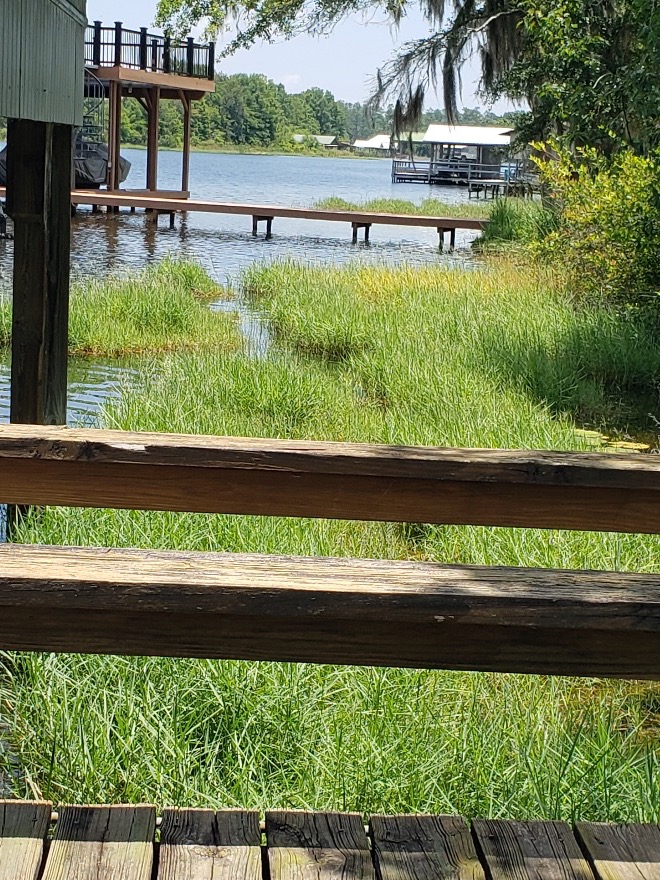One of the most aggressive and difficult invasives to manage is Torpedograss (Panicum repens). It was originally introduced to the Gulf Coast in seed for forage crops to feed cattle sometime prior to 1876. Unfortunately, by 1950 it had escaped cultivation and has been extremely challenging to control since that time.
Torpedograss is classified as a Category 1 invasive species by the Florida Invasive Species Council. Category 1 invasives are the most serious, defined as non-native species that negatively change native plant communities and cause significant ecosystem damage. Florida’s Lake Okeechobee has already lost approximately 7,000 acres of native marsh to Torpedograss and has spread by as much as 21% in just one year. It also poses a very significant threat to the Everglades ecosystem. FWC reportedly is spending up to $2 million annually to control this aquatic invasive species.
While data for Georgia is not currently available, Torpedograss is also spreading on Lake Seminole. Evidence can be seen in many of the residential areas and canals where it chokes of recreational access and navigation. No outboard, inboard, jet or mud motor can operate through torpedograss infestations. Chemical treatment of torpedograss in the water is not effective. Florida manages it by dropping water levels to expose it on dry land where it can be effectively killed. Unfortunately, maintaining cooling water flow to the nuclear power plant prevents the Lake Seminole water being lowered to a level where torpedograss can be controlled. As can be seen in the following pictures, mechanical removal with equipment large enough to remove the deeply embedded rhizomes is proving to be very effective and restores the original sandy/hard bottoms for the benefit of our fisheries.
Torpedograss is a perennial that grows and spreads incredibly fast. The height of the grass can increase up to 0.5″ a day, eventually reaching an above-ground height of four feet or more. Its underground sharp, torpedo-like rhizome stems, which are the plant’s storage and reproductive organs, can spread several hundred feet and can even creep under structures such as streets, driveways, and houses. In a controlled field study where a 1-node rhizome was planted, in less than a year it produced 22,635 nodes. Each of those nodes will generate new Torpedograss plants from sprouts along the entire length of the rhizome. THIS IS IMPORTANT! Torpedograss in the water will also grow on land and vice versa. When cutting your lawn, and torpedograss is present, blowing the grass into the water can start the spread of torpedograss in the water.
Flooding, drought, warm weather, shade, and mowing are all tolerated by Torpedograss. It can even survive fire, which will burn off the top of the grass but will not affect the spreading underground rhizomes that send up new shoots after the fire.
Torpedograss thrives in moist aquatic environments and sandy soils common to ponds, lakes, and marshlands. Its negative impacts on water resources are extremely significant. It reduces biodiversity and displaces native vegetation, forming dense mats that choke out aquatic plants essential for healthy ecosystems and wildlife habitat.
The mats also restrict water flow in canals, thereby trapping sediment, increasing accumulation of other potentially invasive organic material, and reducing oxygen levels crucial for aquatic life. They also hinder fishing and boating recreational activities. Studies have found rhizomes broken off by boating then floated on the water surface and rooted in other locations that increased the invasive spread.
Torpedograss rhizomes can penetrate to a depth of 23 feet. Fortunately, most rhizomes are in the top 24″ of soil. The proven, best way to manage invasive Torpedograss is by systematically removing that top section of soil where the rhizomes are found. The excavator used by the Stewards of Lake Seminole is highly effective doing this work, reclaiming lost wildlife habitat and reopening waterway channels choked off by Torpedograss that are essential for numerous fish species to reach spawning areas.

